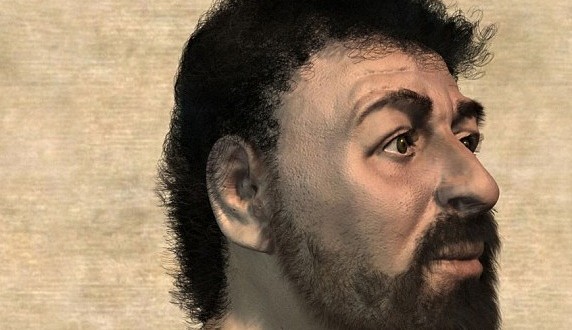A forensic expert has recreated the face of Jesus Christ using state-of-the art science.
Depictions of Christ predominantly show a white, clean shaven man with long, flowing blonde locks.
But the reality may have been very different.
Richard Neave, formerly a professor at Manchester University, constructed the image after he examined three Semites’ skulls from around Galilee in northern Israel using methods more frequently employed to identify victims of crimes as part of a BBC series more than a decade ago.
Despite the image having been circulated widely before, many people have started sharing the reconstruction again.
Professor Neave, an expert medical artist, used computerised tomography to create x-ray slices of the skulls and by evaluating the thickness of the skulls in certain areas recreate the skin and muscles of his face.
He also used ancient drawings at archaeological sites to determine the colour of Christ’s hair and studied the bible to ensure the length was correct.
There is still no definitive answer of what Jesus may have looked like. Earlier this year, Italian detectives revealed what they believed Jesus looked like as a young boy after using the Shroud of Turin.
The Shroud, used to wrap Christ’s body following the crucifixion, inspired interpretations of Christ’s appearance – but the Italian police’s reconstruction looks very different from Professor Neave’s.
Agencies/Canadajournal
 Canada Journal – News of the World Articles and videos to bring you the biggest Canadian news stories from across the country every day
Canada Journal – News of the World Articles and videos to bring you the biggest Canadian news stories from across the country every day



